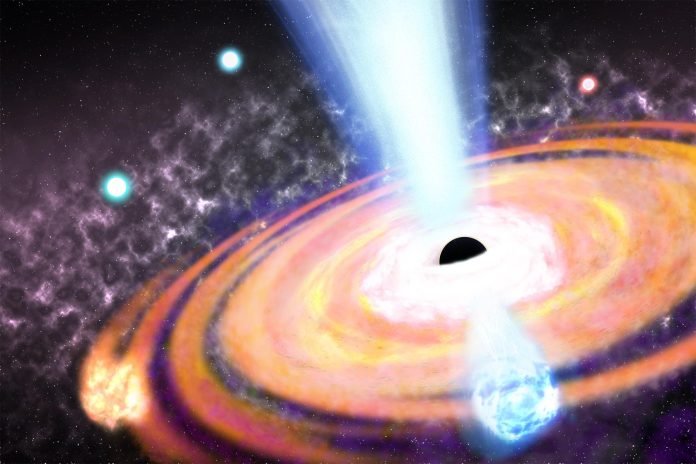
Once upon a time, at the very start of the universe nearly 14 billion years ago, there were these incredible cosmic monsters known as black holes.
We used to think these mysterious entities appeared after stars and galaxies had formed.
But recent discoveries from the James Webb Space Telescope have turned that idea on its head.
Now, scientists believe black holes were not just present from the beginning but played a huge role in creating the stars and galaxies we see today.
Joseph Silk, a renowned professor of Physics and Astronomy, and his team have brought this astonishing information to light.
They’ve found that these black holes, which we once thought of as cosmic vacuum cleaners, were more like cosmic gardeners, helping new stars to bloom across the universe.
This revelation is groundbreaking because it challenges everything we thought we knew about how the universe’s structures formed.
By studying distant galaxies from the universe’s infancy through the Webb telescope, the team noticed something unexpected.
These galaxies were far brighter and had more young stars and massive black holes than anyone had predicted. This suggested that black holes and galaxies grew up together, shaping each other’s destinies from the get-go.
Silk and his team propose a fascinating idea: the black holes were like big, cosmic mixers. They stirred up the universe with powerful outflows, crushing gas clouds and turning them into stars at an incredible rate. This process explains why those early galaxies were so bright and star-packed. It’s like finding out that the quiet kid in class is actually a rock star.
In the universe’s early days, black holes were busy. They weren’t just sitting around; they were ejecting massive winds and acting like cosmic particle accelerators. These activities had a profound effect, essentially jump-starting the creation of stars. The team believes there were two phases in the young universe. Initially, black hole winds kicked star formation into high gear. Then, as these winds slowed down, the creation of stars also took a breather, shaping the galaxies as we know them.
This theory flips the script on our galaxy formation story. Instead of galaxies forming from a peaceful collapse of a giant gas cloud, there was a twist—a black hole seed at the center acting as a catalyst, making everything happen faster and brighter than previously imagined.
The implications of this discovery are huge. It’s not just about understanding how stars and galaxies came to be. It’s about unraveling the story of our cosmic origins, finding out how the universe’s building blocks came together to create the vast expanse we explore today.
Silk and his collaborators, including experts from Johns Hopkins, the University of Colorado, and the Israel Institute of Technology, are eagerly awaiting more data from the Webb telescope. They believe future observations will confirm their findings and offer even more insights into the universe’s early days.
So, next time you look up at the night sky, remember that black holes, those mysterious cosmic behemoths, might just be the reason we’re all here, marveling at the universe’s wonders. It’s a cosmic tale of creation, with black holes taking center stage as the universe’s unexpected architects.



